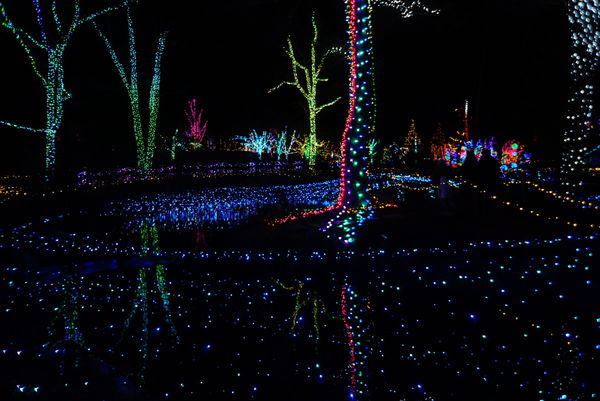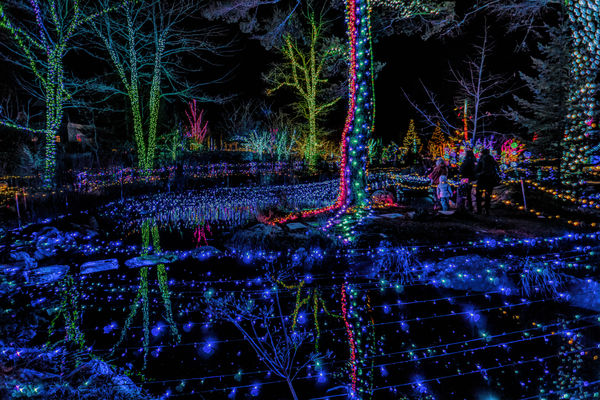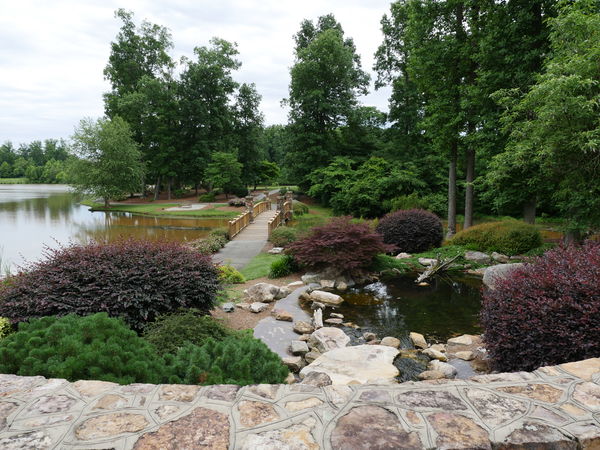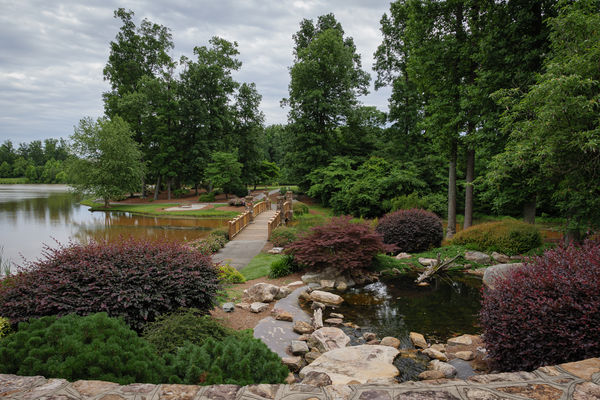Is there really anything wrong with a photo taken in JPEG?
Dec 27, 2020 07:58:06 #
In an earlier comment I included a couple example images chosen mostly because they were recent, but this morning it occurred to me to pull out an older one to illustrate something specific. The fact is that I shoot differently when I expect to edit the capture later. Yes, I capture in RAW and that is different but also I expose differently. In particular, I expose to to the right. In fact, my A6500 camera has an exposure setting that does this automatically. In this mode, the camera scans the scene and sets the exposure as high as possible without over-exposing any of the samples.
I would not expose like this unless I intended to do my own post-processing because so much of the image would simply show up as black - as illustrated in the example below. The sensor in my camera provides fourteen bits of intensity when I shoot RAW, however, and with all of that extra information I expect to be able to pull out much more detail. I could, using HDR get even more detail, but in this case I expected just a single exposure to suffice.
In the examples, the illustration of JPEG right out of the camera is a quite small file - only 440 KB while the image after my post-processing of the RAW file is nearly 23 MB. The reason is that the custom-processed file includes so much more detail, constructed out of the lower six bits for each pixel that are simply discarded in creating the JPEG file.
No doubt, if I had exposed without expecting to simply accept the JPEG image I would have set the exposure higher and simply accepted the penalty of washing out many of the brightest lights, turning them white instead of the many colors. I notice that in fact, the JPEG processing by the camera does actually turn white some of the brightest blue reflections in the foreground.
I would not expose like this unless I intended to do my own post-processing because so much of the image would simply show up as black - as illustrated in the example below. The sensor in my camera provides fourteen bits of intensity when I shoot RAW, however, and with all of that extra information I expect to be able to pull out much more detail. I could, using HDR get even more detail, but in this case I expected just a single exposure to suffice.
In the examples, the illustration of JPEG right out of the camera is a quite small file - only 440 KB while the image after my post-processing of the RAW file is nearly 23 MB. The reason is that the custom-processed file includes so much more detail, constructed out of the lower six bits for each pixel that are simply discarded in creating the JPEG file.
No doubt, if I had exposed without expecting to simply accept the JPEG image I would have set the exposure higher and simply accepted the penalty of washing out many of the brightest lights, turning them white instead of the many colors. I notice that in fact, the JPEG processing by the camera does actually turn white some of the brightest blue reflections in the foreground.
Dec 27, 2020 09:02:30 #
Dec 27, 2020 12:37:42 #
ronpier wrote:
The small amount of post processing I do is thru Apple Photos. Does the job for me.
If you haven't tried it, the Raw Power application / plug-in (App Store price, $29.99) is a HUGE addition to Photos, adding back much of the power from the old Apple Aperture professional app.
https://gentlemencoders.com for full details and links to the free video training and demos that are available on YouTube. It really is a remarkable value.
Affinity Photo ($49.99) also works in tandem with Photos, if you set it up as an external editor. Affinity Photo works on iPads, Windows PCs, and Macs.
Raw Power also works on iPhones and iPads, but not Windows.
If I were a Photos user, I'd have these two apps. In fact, at some point, they may be all I need, and I'm an Adobe user (Photoshop CC, Lightroom CLASSIC CC).
Dec 27, 2020 12:52:43 #
burkphoto wrote:
If you haven't tried it, the Raw Power plug-in (App Store price, $29.99) is a HUGE addition to Photos, adding back much of the power from the old Apple Aperture professional app.
https://gentlemencoders.com for full details
Affinity Photo ($49.99) also works in tandem with Photos, if you set it up as an external editor.
Raw Power also works on iOS devices...
https://gentlemencoders.com for full details
Affinity Photo ($49.99) also works in tandem with Photos, if you set it up as an external editor.
Raw Power also works on iOS devices...
Thanks so much. Been trying to research RAW photo editors for Ipad. Looks very interesting and workable.
Dec 27, 2020 15:14:40 #
pecohen wrote:
In an earlier comment I included a couple example ... (show quote)
Great example! Most of us use cameras with 12-15 stops of dynamic range. Recording a raw file can preserve that for post-processing to the 5-6 stops used in 8-bit processing. If you print an 8-bit file, tones with values below 12 and above 242 are mostly irrelevant. Conventional silver halide color papers have about 5.5 stops of dynamic range when viewed under bright, near-daylight quality light such as 5000K 91+ CRI tubes made for pre-press and off-press proofing evaluations. So when a raw image is recorded, we can post-process it to pull the shadow and highlight details down into the narrow range that a monitor can display and paper can reflect.
Much like audio compression makes car radio listenable over road noise, digital tonal compression makes photos look better before they are converted to JPEG. SOME of that compression can be done in camera, although pretty crudely, unless you do some testing and know what settings to use in various situations.
Here's a scene I photographed as raw + JPEG. The differences are pretty clear to me. The JPEG from the camera looks decent... until I see the JPEG I post-processed in Lightroom Classic.
Dec 27, 2020 21:43:29 #
Dec 28, 2020 04:57:08 #
burkphoto wrote:
Great example! Most of us use cameras with 12-15 s... (show quote)
Yes Bill - that IS a great example. I downloaded your camera JPG - try as I might with PP, I could not match your RAW to JPG pic.

Dec 28, 2020 05:57:06 #
Delderby wrote:
Yes Bill - that IS a great example. I downloaded your camera JPG - try as I might with PP, I could not match your RAW to JPG pic. 

No longer possible as the subtle blending in the dark areas are already gone.
Dec 28, 2020 08:34:43 #
Delderby wrote:
Yes Bill - that IS a great example. I downloaded your camera JPG - try as I might with PP, I could not match your RAW to JPG pic. 

Yeah, the data isn’t in the top JPEG, so it can’t be “added back.”
Working with raw files lets one do much of what color negative films do. Negative films are made to record very flat images, so that the tonal compression ratio of a normal scene on the negative fits within the reflectivity of the paper.
There was enough range in my raw file to pull much more detail from highlights and shadows. The image export (bottom example, above) looks much like the scene did, live.
Dec 28, 2020 09:21:14 #
We can set the camera to capture both RAW files and JPEG files. A large-enough JPEG file allows plenty of adjustment latitude in Adobe Camera Raw. I say so from experience.
Strodav wrote:
You have to define "wrong" for you. For... (show quote)
Dec 28, 2020 11:19:54 #
Dec 28, 2020 15:10:21 #
I think jpeg is fine for most purposes. However; i understand it's also a very "lossy" file type when editing and saving. I've read that the image degrades every time you save it.
Can anybody here corroborate this?
Can anybody here corroborate this?
Dec 28, 2020 15:21:01 #
The reason why I ask this is there are so many photographers that say, "I will only shoot RAW"! What is wrong with them?...Julian
Dec 28, 2020 15:30:38 #
I think I understand what you said. Then I could use the P mode to take the shoot and then control the variables in post-processing. Is that correct?...Julian
Dec 28, 2020 15:33:55 #
My uncle, who is my mentor told me always make a virtual copy of the photo that you decide to work on and that has saved my butt most of the time...Julian
If you want to reply, then register here. Registration is free and your account is created instantly, so you can post right away.












